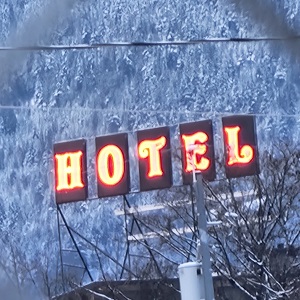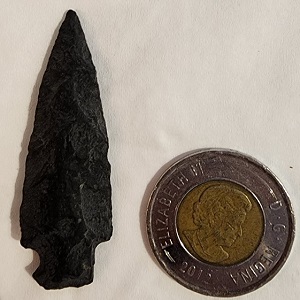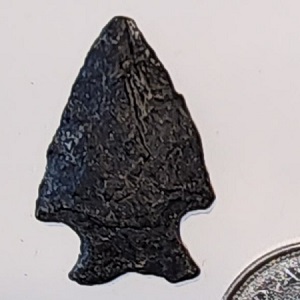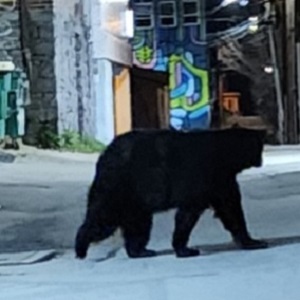Home
The Unconscious
- Details
- Written by: Rod Boyle
- Category: Ideas & Questions
- Hits: 2132
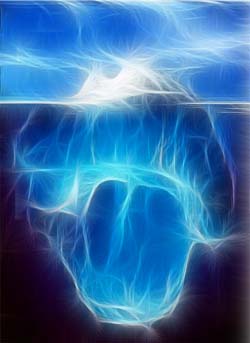 A popular idea in psychology is that of the "Unconscious". The unconscious mind is that part of our mind that, depending on your interpretation, deals with issues such as sex, death, shame, guilt, repressed memories, and so on and so forth. If the mind were compared to an iceberg, the unconscious would be that 9/10 that lies below the surface, never seen or experienced save in dreams.
A popular idea in psychology is that of the "Unconscious". The unconscious mind is that part of our mind that, depending on your interpretation, deals with issues such as sex, death, shame, guilt, repressed memories, and so on and so forth. If the mind were compared to an iceberg, the unconscious would be that 9/10 that lies below the surface, never seen or experienced save in dreams.
There the comparison would end. Unlike an iceberg, the unconscious mind is not inactive or frozen, it is very much a living and changing part of us.
Freudian Psychology labels the unconscious mind the "ID", which drive and contains our most basic instincts - sex, death, hunger, shame, guilt, repressed memories, etc. The next level is that of our consciousness - Our waking, day to day selves. This he terms the "EGO". It is ourselves, our actions and interactions in the real world. And finally there is the "SUPEREGO" - or ourselves as we would like to imagine ourselves to be - our morals, ideals, etc. This combination of the ID, the EGO and SUPEREGO together form the whole self.
Now that is a very brief introduction, and there is of course much more reading that can be done on the topic. And for the sake of brevity I've condensed his theories into 1 paragraph, so bearing in mind the economy with which they were described please don't email me to debate small matters of definition.
The first thing to bear in mind is that his theory is just one way of slicing up the human mind. By this I don't mean the "Brain", the physical apparatus, that at the moment is being done to death. That has it's place here as well, but a small one. I mean the abstract mind, the person as a sum of his thoughts, actions and experiences. There are many other ways to divide the same mind, other labels that describe similar things, some in greater or lesser detail, some agree, some disagree. But for this posting we'll deal principally with Freud and his theories of the unconscious.
The unconscious, then, is that sum of repressed drives, ambitions and experiences that lay beneath the surface of the civilized man. It is not, by definition, obvious. How then can we determine it's existence?
Freud looked at several things - including children, dreams, word associations, and fairy tales/Myths/literature to find evidence and traces. His theory of the Oedipus Complex is based on the Greek Myth of Oedipus. Reasoning that the unconscious comprises the bulk of persons psyche it was reasonable to conclude that this would find some expression - the expression, and means that it chose, would probably be through metaphor.
Children were good to study because the EGO, or conscious layer of social expectations and norms, has not been fully overlaid. For children, the Unconscious is the Conscious. But by the time a child can talk or communicate most of the natural language of the unconscious will have been lost, pushed down or suppressed.
He looked at dreams. Dreams are complex worlds filled with symbolism and metaphor. They form a sort of mental landscape, a guide to where we are at present with the unconscious. Unresolved issues, conflicts and basic needs are all dealt with here and reveal themselves in their own language through dreams to the conscious mind.
Associations were another way. People could freely associate words and images, and the associations would form a sort of mental map of the world beneath the surface.
But these methods deal with people, individuals, and to generalize - create a theory that is in some way valid for ALL people - you would need to look those experiences all people shared. And this is not easy, people create to some extent unique symbols and metaphors that are applicable to their unique experiences and histories.
So we can look to the arts - Literature, Painting, Myth, Folk and Fairy Tales.
And here is our guide. Orpheus 's map to the underworld. The interpretations may vary, but the message and the archetypes remain the same.
Looking at hundreds, thousands of stories and myths the unconcious is revealed. And with map in hand and a few easy signposts given it becomes very easy to read. Because literature - poetry - myth - the arts - are all guides to our unconscious.
The underworld is the unconscious. And everywhere you read underground, read unconscious.
Frogs and Toads, amphibians in general, are sex symbols. Which is curious, because we can physically associate them with the "Limbic", or reptilian part of our brains that is concerned with the basic drives and impulses. The part of our selves we inherited from the dinosaurs.
Fairy tales take on a whole new light. "The Frog Prince" becomes a tale of sexual initiation and the transition from girl to womanhood. It's a story we tell our children, an unconscious primer written in the language of the unconscious, symbolism and metaphor, to ready them for events that will take place in their own life. We think of it as a fairy tale, but it's popularity over hundreds of years, surviving the natural selection that applies to the arts and ideas, is a testimony to it's deeper and underlying truth.
"Theseus and the Minotaur" explores the same territory - in which Theseus must descend into the Labryinth to rescue the 7 lads and 7 maidens from the Minotaur. The labryinth is the unconscious, the half-man, half-beast of the Minotaur the demon that dwell within it.
And there are more recent stories - not classics, but their enduring popularity suggests that they too conceal an underlying truth. By which I am thinking of Edgar Rice Burroughs - think specifically of Pellucidar - the world within the world, populated by scantily clad women, cannibals, monsters and dinosaurs. A world of perilous adventure. Or think of "Journey to the Center of the Earth" - again a world within a world filled with prehistoric beasts and terrors. From these we might surmise that the unconscious is a dangerous place.
"The Hollow Earth" is a common enough metaphor for the unconscious, but there are countless others. A commonplace trip to the cellar is a journey to the underworld, the unconscious. Think of all the books that build and elaborate upon the horror of going downstairs. And the menacing, primal terrors that lurk there. The confrontation of things we'd prefer to forget, to ignore, to pretend don't exist. Think of, as a child, going into the cellar. The apprehension and fear - not just because it's dark, because when the lights are on it's not necessarily darker than any other room, but the imagined bestiary and denizens that populate it. Think too of the associations - the word "cellar" suggests damp, wet, cool, dark, the sounds of gurgling, dripping water and pipes, echo's, the possibility of getting lost.....
The theory, the map, our collective map of the unconscious is rewritten daily. The 1961 comic adventures of Eric Kane recount the adventures of a criminal who ventures into the subterranean realm of the lizard men, plots to steal their diamond, and as a result of his greed is transformed into a lizard man himself. David Icke warns of shape-shifting "Lizard Men" who run the world out of greed and to their own ends. Perhaps laughable, but consider the number of people who take him seriously.
We have new words for these old ideas, we rename the cellar "The Basement" - but still it conjures up the same ideas and feelings. The basement is the perfect place to store those things we no longer want or use, but can't seem to let go of or get rid of. And so the basement - a conscious idea or construct, a concrete place; becomes a concrete metaphor of our unconscious.
Imagine an artist, painter or writer, working from his /or her basement. Then imagine the same artist working from an attic, garret or loft. Which is more natural? When imaging it, imagine the quality of work they produce? What images are evoked?
It's simple. The Attic or Garret is easily recognizable as a metaphor for the SUPEREGO, or our ideal selves. The basement is not the same, when imaging the basement it is easier to imagine a mad scientist's laboratory or a dungeon. Victor Frankenstein worked in the basement on his creation, if not in the novel then certainly in our imaginations.
The mythology and feeding of our subconscious minds continues today. Few of us find time to read the classics or fairy tales. Instead we live in an information rich age where we are bombarded with thousands of images daily that flit past our conscious mind to lay wait and digest in our unconscious. Advertisers carefully link their products through music, colors, imagery and association with sex and death - knowing that we will not find time to scrutinize them all they are devised to be scanned and forgotten, only later to be digested in our unconscious. The conscious need or want of their wares will trigger when we next are near their products. For most of the goods we consume there are no conscious reasons, only responses to messages that were conditioned and laid into us through advertising and the media.
These are the new myths and fairy tales.
Related Links: Joseph Campbell on Google Video - The Power of Myth
The Play
- Details
- Written by: Rod Boyle
- Category: Miscellany
- Hits: 2304
"A Play, A Play, what could be more boring than a play!" - Homer Simpson
On Saturday I went to see a play. There were tickets, gift certificates, they had to be used up. And so I found one I liked and went to exchange them, but I made a mistake, quoted the wrong play, I was confused. SO many posters on the walls. And after the tickets were printed I explained my error but the clerk, the friendly clerk, told me what a fortunate mistake I'd made, how he wanted to see the play himself for which I now had tickets, it was going to be a good one, and I thought that perhaps this was one of those happy accidents life sometimes offers and decided to take my chances.
Now there is a convention that Canadian writers don't criticize other Canadian writers. This because, in the small world of Canadian publishing and Theatre, there is the distinct possibility that the writer you slight might find him or herself in the position to review your work. And we'd like them to be kind. So the play, the first run of a new local play, and the playwright, an award winning local playwright, shall remain nameless.
So to the play.
It opens very much like a play. I'm impressed with the staging, there is a stage, there are props and set decorations, actors and actresses. It must have been very expensive.
And there is that deft and snappy dialogue, it reminds me of Mamet, or Pinter. It dovetails together, each player finishing the others sentences, long pauses where I check my watch. 90 Minutes with no intermission.
They have given us surveys to be filled out before we enter the play, I've left mine blank, time now, when the lights are up, to peruse it, perhaps I should have filled it in, there's a prize....
There is a sense of mystery in this play, it opens with it, the first scene, a man being interrogated by an unknown stranger. "Who is he?" we wonder. And there is romance, a woman torn between her true love and her abusive husband. "Who will she choose?" The suspense is unbearable. But that is not the mystery. No, the mystery is too mysterious to be summed up here, it's an existential sort of mystery, strange characters interacting with our protagonist, then disappearing from stage...."Who is this stranger?" we wonder again, but it's not revealed, not right away, that's part of the mystery. And the other part is the way the characters forget themselves, find themselves in strange, inexplicable circumstances."How strange and inexplicable" we think. That's the other part of the mystery. And there is still a third mystery generated by the play, and that is how I came to be here, in this theater, checking my watch....
The play proceeds, well, like clockwork.
There's metaphor too, but I'm not sure I understand it. The lead character in the play, he's a metaphor for something, but I can't quite place what. It's a mystery.
More mysteries. More Drama. It's very psychological, this play. The props are good, too. There's a chair that the actors use for sitting in when required to by the script. And doors that they go in and out of. Sometimes the lights dim and you can't see them appear on stage, so it's like a bit of magic when they come back on and there they are. More mysteries. More play.
Then there's the finale. This is when the mysteries are finally revealed. It wasn't about the play, after all, we find out, it was about the meaning of life. Our existence. It's very snappy the way it wraps up, all the plot ends come together, mysteries explained, our involvement with the characters, our emotional investment, is tidily brought to it's existential close. With no cheating or shortcuts, just the way you'd expect after 90 minutes.
And so that was it. 90 minutes of "The Play". All in all I would say that the writer, in this instance "The Tortured Artist", used the medium of theatre very well to communicate his views about times-a-wasting to us, the tortured audience.
The Quiet House
- Details
- Written by: Rod Boyle
- Category: Miscellany
- Hits: 2285
The children have left. At first there is the breath of relief, time, now, to get back to work. There's much to be done. And I sign into the computer and check my emails.
And then there is the silence. The strange, overwhelming silence that hits you like a freight train when you weren't expecting it. The house is quiet. Dead quiet. With the children gone it'll be an hour, maybe two, before the mice come out to play in the garbage.
And I wasn't expecting it but I'm missing them already.
Public Art - The Toynbee Tiles
- Details
- Written by: Rod Boyle
- Category: Link of the day
- Hits: 1808
I love public art. By public art I don't mean that art sanctioned by city councils and governments, that's not art. There is nothing even remotely artistic about it. Governments and Jury's simply don't have the wherewithal to judge art.
No, by public art I mean art given to the people, slipped surreptitiously into their diet of news and misinformation without their knowing. Art that seeds thought. Art that raises questions.
Crop circles are one example. Some people put them down to space aliens trying to communicate with us. Personally, I subscribe to the view of a group of guerrilla artists. Whatever you think, they have become a sort of cultural meme.
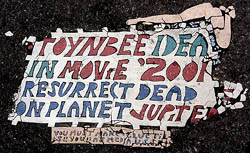 Another example I'm very fond of are the Toynbee Tiles. They consist of a linoleum and asphalt blend of tile that's layered into the pavement of streets. Examples have been found in many major cities, the identity of the artist remains unknown. Typically the tiles state:
Another example I'm very fond of are the Toynbee Tiles. They consist of a linoleum and asphalt blend of tile that's layered into the pavement of streets. Examples have been found in many major cities, the identity of the artist remains unknown. Typically the tiles state:
TOYNBEE IDEA
IN KUBRICK'S 2001
RESURRECT DEAD
ON PLANET JUPITER.
Or some variation thereof.
Further reading:
The NY Times (1999) on the Toynbee Tiles
Page 843 of 875

